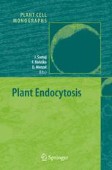Search
Filters applied:
Search Results
-
Protein Markers for Somatic Embryogenesis
The capacity for somatic embryogenesis is a remarkable property of plant cells. Somatic embryogenesis is the process by which somatic cells...
-
Somatic Embryogenesis in Rose: Gene Expression and Genetic Transformation
Induction of somatic embryogenesis in roses involves several critical steps requiring specific tissue culture media compositions and particular...
-
Cytological, Physiological and Biochemical Aspectsof Somatic Embryo Formation in Flax
The cytological, physiological and some biochemical aspects of somatic embryo formation in flax are discussed. From the review it is obvious that...
-
Tip Growth and Endocytosis in Fungi
Recent advances in molecular cell biology have provided new insights into different cellular processes that all turn out to contribute to...
-
Worldwide Occurrence of Organotins from Antifouling Paints and Effects in the Aquatic Environment
Organotins belong to the most toxic pollutants for aquatic life known so far. Widespread contamination of harbors and areas with high ship**...
-
Auxin Transport and Recycling of PIN Proteins in Plants
Polar transport of the phytohormone auxin is mediated by plasma-membrane and endosome localized carrier proteins. PIN proteins are the best...
-
Why Somatic Plant Cells Start to form Embryos?
Embryogenesis in plants is not restricted to the fertilized egg cell but can be naturally or artificially induced in many different cell types,...
-
Environmental Design Considerationsfor Somatic Embryogenesis
In addition to the biomolecular, physiological, and biochemical aspects of somatic embryogenesis, careful design of environmental conditions is...
-
Origin, Development and Structure of Somatic Embryosin Selected Bulbous Ornamentals: BAP as Inducer
Somatic embryogenesis in three important ornamentals is discussed in this chapter. Direct somatic embryo development on the explant tissues...
-
MDR/PGP Auxin Transport Proteins and Endocytic Cycling
Auxin is an essential regulator of plant growth and development. Polarized transport of auxin is responsible for apical dominance, tropic growth,...
-
Somatic Embryogenesis in Genera Medicago: an Overview
This chapter outlines the details of somatic embryogenesis in genera Medicago. Various factors that influence the process of somatic embryo...
-
Somatic Embryogenesis of Pine Species: From Functional Genomics to Plantation Forestry
Several economically important tree species belong to the genus Pinus and many of them form the ecological base of forest ecosystems. Pine wood is...
-
Screening and Analysis of Pollen Tube Mutations
Although the cytology of the cellular aspects of male gametophytic development has been very well described for several species, molecular...
-
Chemistry and Fate of Organotin Antifouling Biocides in the Environment
Organotin antifouling paints are degraded relatively rapidly in seawater mainly by microorganisms, but they have high affinities to sediment and...
-
Sterol Endocytosis and Trafficking in Plant Cells
Structural sterols are integral components of biological membranes. They regulate membrane permeability and fluidity, and they influence the...
-
Comparison of Molecular Mechanisms of Somatic and Zygotic Embryogenesis
Somatic embryogenesis has been used as a model system to understand the mechanisms regulating plant embryogenesis. The morphological and...
-
Extracellular Guidance Cues and Intracellular Signaling Pathways that Direct Pollen Tube Growth
Fertilization in flowering plants requires that a pollen tube deliver two sperm to the female gametes, which develop in ovules buried deep within...
-
SNAREs in Plant Endocytosis and the Post-Golgi Traffic
In eukaryotic cells, the transport vesicles carry various cargo proteins from a donor compartment to a target compartment, and discharge the cargo...
-
Plant Vacuoles: from Biogenesis to Function
The plant vacuolar system is far more complex than originally expected and multiple sorting pathways leading to various types of vacuoles can be...
-
Endocytosis in Guard Cells
Stomatal movement requires large and repetitive changes to cell volume and consequently surface area. These alterations in surface area are...
